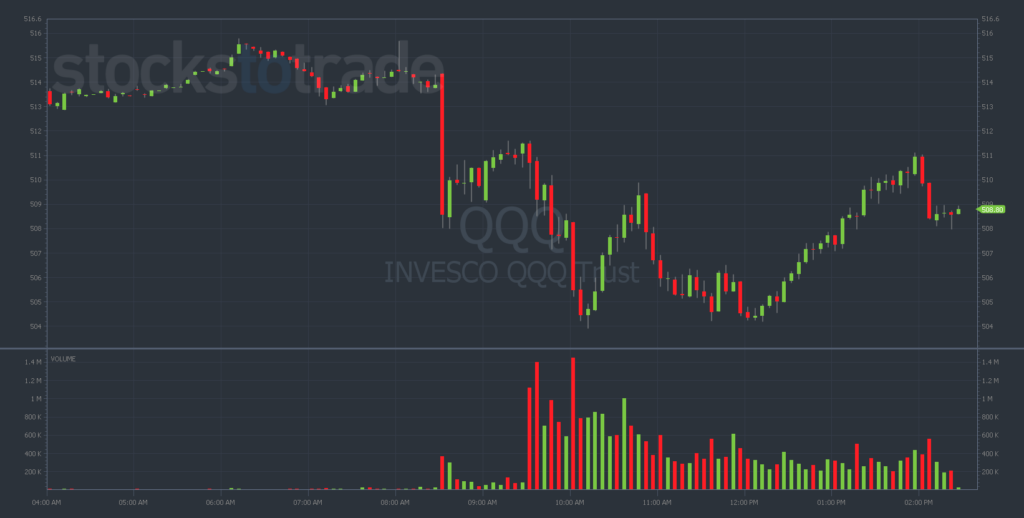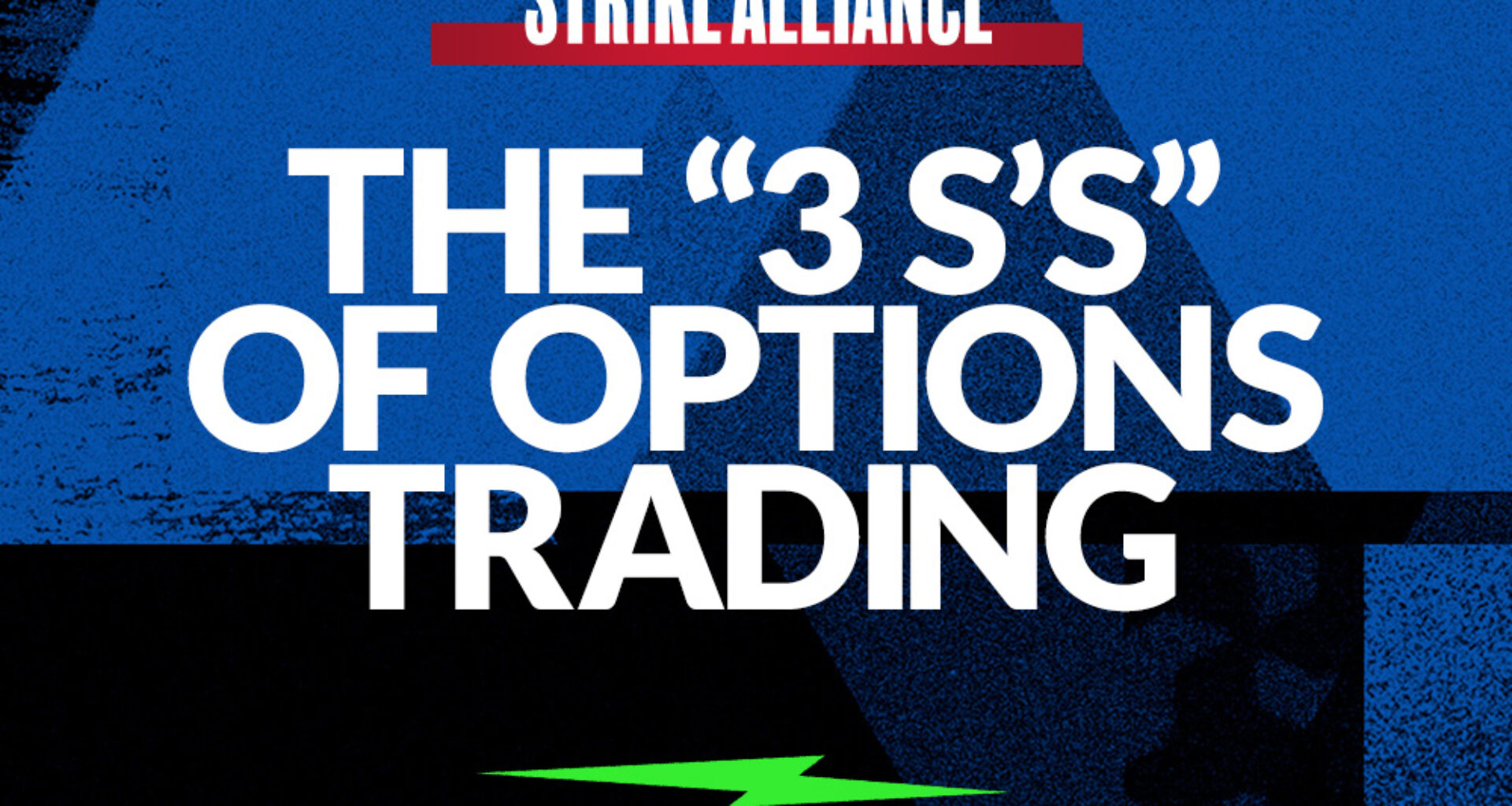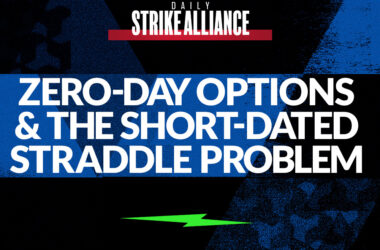Happy Monday, traders…
Ben here.
A friend recently asked me why I trade options instead of common shares.
“Isn’t it riskier?”
I get it — on the surface, options can seem complicated, and stock trading feels more straightforward.
But once I explained my reasoning, my friend actually asked me for an options-trading crash course.
Take last Friday, for example, when the Nasdaq dropped a brutal 2% intraday:

Garden-variety stock traders had two choices: sell at a loss or cross their fingers for a rebound.
But options traders had tools like VIX calls and SPY puts at their disposal, which could’ve hedged their portfolios from a major drawdown (or even flipped them green).
Options offer flexibility that common shares just can’t match. The market doesn’t have to be perfect for you to succeed — you just need to use the right tools at the right time.
And that’s where The 3 S’s of Options Trading come in…
Speculation

One of the biggest advantages of options trading is the ability to speculate in ways you simply can’t with stocks.
When you own shares, your potential profit depends entirely on the stock price going up. If the share price doesn’t rise, you either face a loss or make less profit.
In other words, you’re stuck.
Unless you have a large account to short-sell shares, it’s nearly impossible to profit on red days.
But options allow you to profit from up, down, and even sideways moves. Strategies like spreads, straddles, and iron condors let you tailor your trades to the market.
Additionally, if you do want to bet against a stock (or the broader market), puts are the best way to do so.
I don’t know why anyone would naked short common shares when the “option” to buy puts is on the table (excuse the pun).
Shorting stocks has theoretically unlimited risk. If the stock you’re shorting rips to new all-time highs, you’ll lose more money than you invested in the position.
This can put you at risk of receiving a margin call and blowing your entire account up.
On the contrary, if you buy puts, your risk is defined. You can never lose more than your initial principal investment.
Bottom Line: Options offer speculative flexibility, even on the toughest trading days…
Speed

Another key advantage of options is the ability to control the speed of your trades.
Stock traders often wait weeks — or even months — for the price to hit their target. That can tie up your capital in opportunity cost and limit your opportunities.
Options let you match your trade’s timeline to your market outlook….
Weekly Options
These expire within a week and can deliver huge, fast returns if the stock moves in your favor. However, they lose value quickly — like, 30-50% in minutes — if the stock goes the other way.
Monthly Options
These expire every third Friday of the month and are widely traded. They often have better liquidity and tighter bid-ask spreads than weeklies.
Long-Dated Options (LEAPs)
If you think the stock needs more time to move, or you want a lower-risk trade, long-dated options (expiring months or years out) are a great choice. Buying in-the-money (ITM) contracts can mimic owning shares, making them great for creating “synthetic long” positions.
This flexibility allows you to adapt to different market conditions, adjusting the speed of your trades to fit your goals…
Size

Finally, options give you incredible flexibility with position sizing.
With stocks, you need a significant amount of money to see meaningful gains. But with options, you can control a large position with much less capital.
Each options contract represents 100 shares of the underlying stock, giving you leverage. This means you can risk less money while allowing room for big profits.
For example, let’s say you have $1,000 to trade:
- If you buy shares of a stock priced at $50, you could afford 20 shares. If the stock rises $5, you’d make $100.
- But with options, you could buy five contracts at $200 each, controlling 500 shares. If the stock rises $5, your profit could increase by 100%-500%, giving you a much higher return.
This leverage can amplify your gains, but it’s a double-edged sword — it can also increase your losses.
That’s why it’s crucial to size your positions carefully, keeping your risk tolerance and account size in mind.
Think small — smaller trades can limit potential losses (while still giving you room to profit).
Now, before we go, let’s look at:
💰The Biggest Smart Money Bets of the Day💰
- $26.7 million bullish bet on SLV 03/21/2025 $26 calls @ $2.35 avg. (seen on 1/10) [HUGE BET ALERT]
- $10.3 million bullish bet on TSLA 01/17/2025 $405 calls @ $6.26 avg. (seen on 1/10)
- $6.7 million bullish bet on TLT 04/17/2025 $92 calls @ $0.87 avg. (seen on 1/10)
Happy trading,
Ben Sturgill
P.S. TOMORROW, January 14 at 12:00 p.m. EST…
The great Danny Phee is joining me for a LIVE Smart Money WORKSHOP where we’ll break down the most promising Smart Money Sweeps of the week.
Stop missing huge Smart Money trades — Reserve your seat before it’s too late!
*Past performance does not indicate future results





